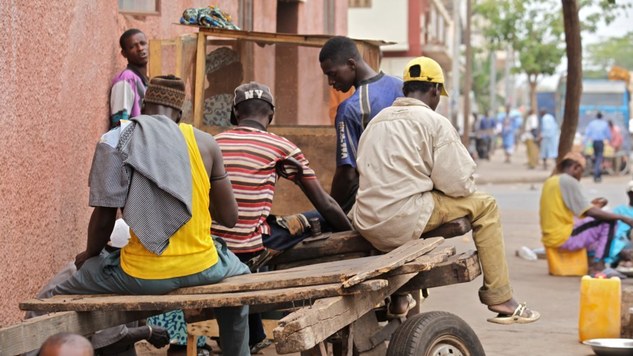We have to learn to make room for God, to give him elbow room. We calculate and estimate, and say this and that will happen, and we forget to make room for him to come in as he chooses. Would we be surprised if God came into our meeting in a way we had never looked for him to come? Do not look for him to come in any particular way, but do look for him. The great lesson to learn is that at any minute he may break in. Always be in a state of expectancy, and see that you leave room for God to come in as he likes.
~ Oswald Chambers, My Utmost for His Highest
 |
| A matatu is a van or bus used for public transportation |
It seemed like any other day. I was on a matatu to meet Masudi for lunch and take him to the doctor. At the Karen stage, when I was unexpectedly moved to a different matatu, I was glad to get one of the front seats. A minute or two later, the conductor seated an older white gentleman next to me. While I do see other whites on public transportation now and then, it isn’t very common.
As we headed down Ngong Road in the slow-moving traffic, I greeted him. Sitting much lower in the seat than me, he wore a khaki safari hat with the brim bent down to shade his eyes from the sun. He said he’s lived in Kenya for fifteen years and when I told him I’ve been here for thirteen, he lifted his head so he could look me straight in the eye.
With a sigh, he replied, “Hmm. It’s not easy living here, is it?” When he shared that sentiment, I immediately felt drawn to him.
I had been praying about an issue that had been on my mind lately. I hadn’t discussed it with friends, but was waiting to hear from God on the subject. However, I felt prompted to mention the subject to this guy, a complete stranger. As he again tilted up his head and turned to look me directly in the eye, his immediate response was exactly - precisely - what I needed to hear.
We sat next to each other for a half-hour, with him all-the-while rambling on and on with one wild story after another of his life. He’s 80 years old and refers to himself as an apostle of God - “I am Apostle Seth," he declared, "just like Apostle Paul in the Bible”.
Was he an angel sent from God? Or just an eccentric old man?
One thing I do know for an absolute fact: it was God’s voice sent directly to me. Over the span of a few weeks, God spoke the same exact message three times… from three very different sources!
As we continued down the road in the old, beat-up matatu, Seth kept up with his crazy stories. Several times, though, he would suddenly stop, interrupting himself, to emphatically repeat those same words... the very message I needed to hear.
We are apt to overlook this element of surprise, yet God never works in any other way. All of a sudden God meets us. There is no escape when our Lord speaks. He always comes with an arrestment of the understanding. Has the voice of God come to you directly? If it has, you cannot mistake the intimate insistence with which it has spoken to you.
~ Oswald Chambers, My Utmost for His Highest







